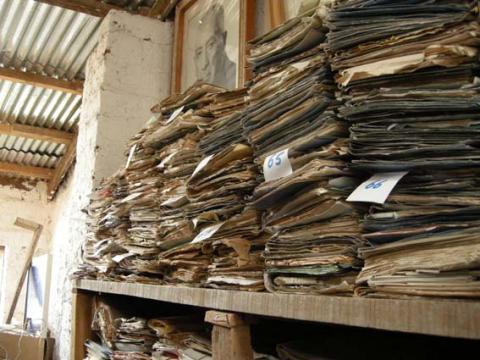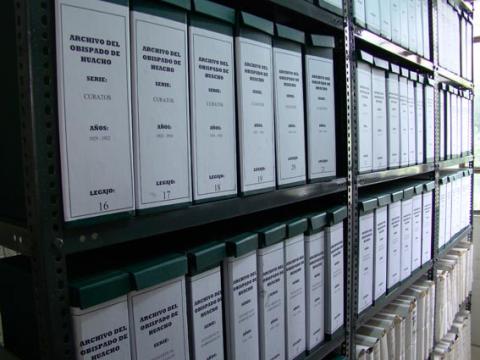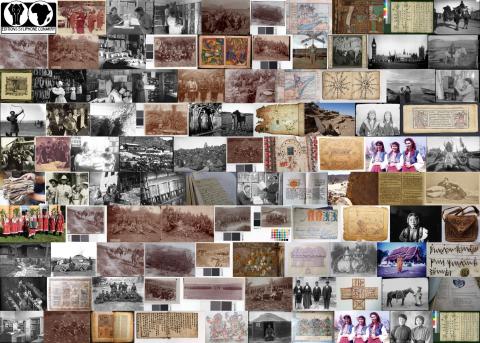
Aims and objectives
In spite of being distant from the capital and therefore apparently removed from the politics of the country, the provincial press in nineteenth-century Peru was surprisingly developed. The many publications that were produced in medium-sized and small provincial towns have been hardly studied and remain an important and untapped source for the revision of the history and society of early republican Peru. Most of these publications remained in the localities where they were produced and are now languishing in under-funded regional archives that do not have the resources to keep them in the appropriate conditions. These newspapers are unique because they contain the particular visions of local, national and international realities produced in these rarely studied areas.
For example, a newspaper from Ayacucho, a small town in the Andes, discusses in its editorial in 1849 the importance of the 1848 revolutions in Europe and their impact in local politics, a topic that will once again resonate during the 1854 revolution in Peru, where slavery was finally abolished. The study of these newspapers will make it possible to have a more complete and more nuanced understanding of the recurrent regional conflict that engulfed Peru during most of this period. Access to the provincial press, and through it a better comprehension of the thinking that took place outside the capital, will make it possible for historians to move further away from the Lima-centric focus of Peruvian historiography. So far attempts to widen the knowledge of Peruvian history has led to studies of mayor cities such as Cuzco and Arequipa, but these studies have been focused only in one region, they have not given real attention to smaller urban areas, or to the interaction between provinces and not just between the provinces and the centre. Making these resources known will be extremely useful and foster a renewed interest in the press similar to the one that took place once the catalogue of newspapers of Cuzco appeared in 1999.
During a survey of the regional archive in Cajamarca in 2004 the newspaper collection was examined and it was surprising by how important and significant the collection was on one hand and yet on the other by the terrible state it was in; it could hardly be consulted because it was in urgent need of repair. The whole collection was in a general state of neglect with not more than a handful being able to be read because of the extent of the damage and their delicate condition. It has been affected by moths, in some cases humidity, as well as by previous attempts at repairing it with the wrong materials, such as sticky tape. The archivists lacked training in how to care for this fragile poor quality paper.
This project aims to visit most urban centres in the country that now house regional archives. In the north Trujillo, Chiclayo, Piura, Cajamarca and Huaraz will be visited, in the centre Huancayo, Huanuco, Tarma and Cerro de Pasco, and in the south Arequipa, Ayacucho, Moquegua, Tacna and Puno. These visits will make it possible to ascertain the holdings as well as their state of conservation and level of risk. Samples will be taken with a digital camera and each archive will be consulted on their training needs. Once this has been established the pilot will consider the best way to proceed to the digitisation or microfilming of the collections, investigate the best way to provide training to the staff in the archives in preservation of newspaper collections, and produce a detailed listing of the existing newspaper holdings.
The final outcome of the project will be a catalogue of all available nineteenth-century newspapers produced in Peru. It will contain the details of the publications making clear where each number and edition can be found and their state of conservation. The catalogue will make it possible to have a sense not only of the current state of the collections, but also of the importance of particular holdings. This will be an extremely useful tool for research, as for the first time there will be a clear sense of the amount of newspapers produced and the topics and periods which they covered. The catalogue will also include details of newspapers available in Lima and in other important collections such as the ones held at the Universidad Católica, Universidad de San Marcos, and the National Library, as well as Yale University and the John Carter Brown Library, which are the places with the largest collections that hold nineteen century newspapers. This catalogue will be made available to the research community through publication and copies of this catalogue will also be deposited in each of the regional archives as well as in the Archivo General de la Nación and the Biblioteca Nacional in Lima.
Once the pilot project is completed a second application for funding will be prepared for a major grant that will create copies of all the newspapers held in the regional archives identified as being at risk. The project will also develop a training programme for the staff of these archives to make it possible for the conservation of their current holdings.
Outcomes
The aim of the project was to survey the holdings of 19th century newspapers held in several regional archives in Peru. The idea was to assess the importance of particular collections and their current state of conservation. This information was sought in order to establish the training and copying needs so an optimal major grant proposal could be prepared. The backing of the archives for future grants was also sought.
A second aim was to produce a survey report that would become in itself an important tool for research as it would contain the information on where newspapers were held and their conditions. It was also intended to include the holdings of 19th century newspapers held in Lima, Yale University, the John Carter Brown Library as well as the regional archives in order to ascertain if the ones held in the provinces were indeed the only copies and hence more significant. Some digital photographs would be taken as samples.
The project was extremely successful in ascertaining the situation of newspapers in the provincial archives in Peru. It has become clear that some archives have very interesting and indeed endangered collections, while others do not have any.
Visiting the different archives and talking to the local archivists has made it possible to assess their particular needs and requirements. The involvement of a paper conservation specialist was valuable as her recommendations were made in situ and some of her advice could be taken on board straight away. This made it possible to properly assess the situation faced by the collections.
A survey of the newspapers held in the provinces as well as in several libraries and collections both in Lima and abroad has been produced. It has shown that most of the newspapers held in the provincial archives are unique and some very endangered. It has also been ascertained that some of the most endangered materials are the most modern ones and that in fact early 20th century newspapers face even greater challenges as they are of acid paper.
The survey of the newspapers has been set up as a searchable database and copies sent to all the libraries and archives that were visited. There are now copies at the National Library and National Archive in Lima, the Archives of Piura, Chiclayo, Tacna, Ayacucho and Puno, as well as the Pontificia Universidad Catolica del Peru and the Universidad Nacional Mayor de San Marcos. Copies have also been sent to Yale University and the John Carter Brown Library.





